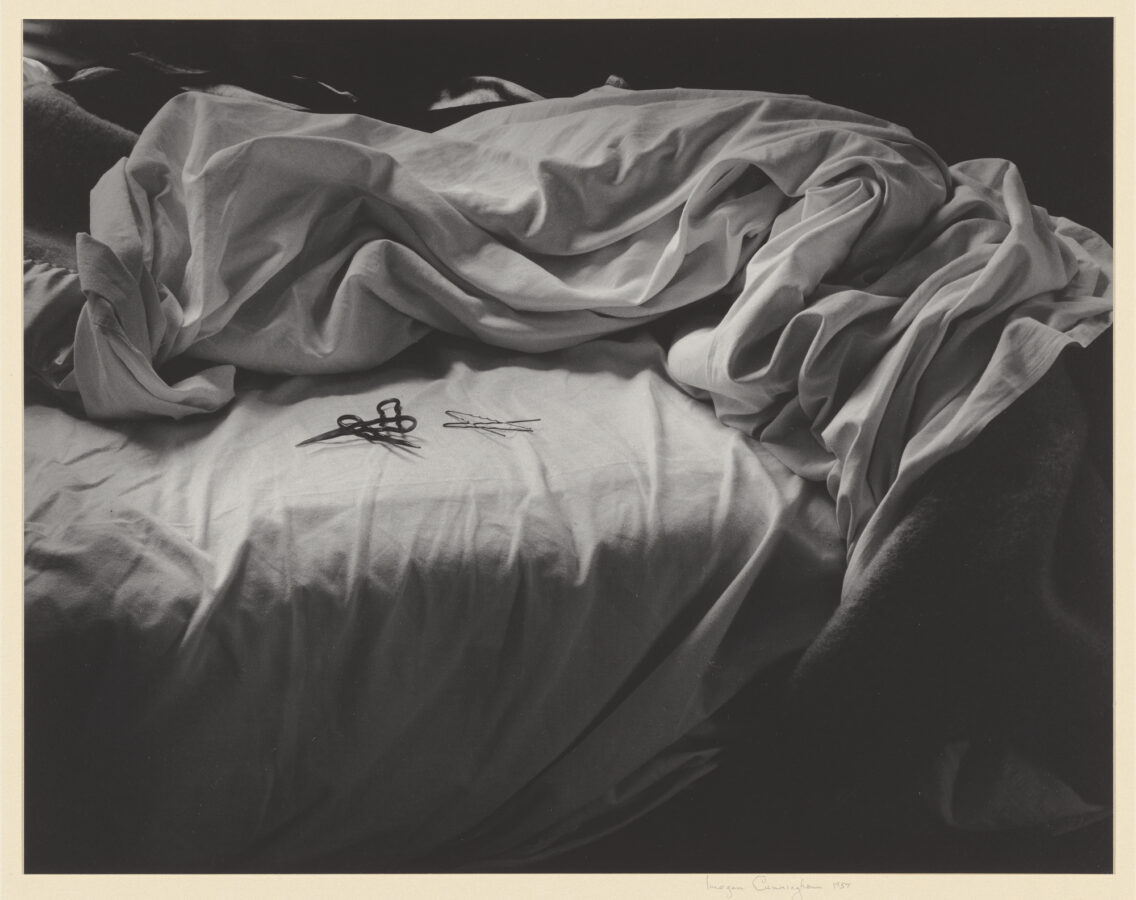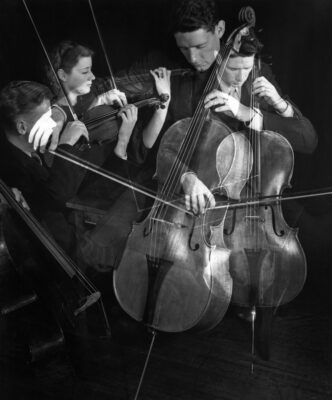
“Imogen Cunningham: A Retrospective” at the J. Paul Getty Museum
by Bondo Wyszpolski

Cunningham’s 1956 solo exhibition at Limelight Gallery in New York was favorably mentioned by the New York Times, but long before then people had taken notice of her pictures. It also helped that she came from a liberal background and was not discouraged in her choice of a career.
To begin with, she had a rather eccentric father. Isaac Burns Cunningham, writes Susan Ehrens, “was a freethinker, a vegetarian, and a Spiritualist. He was bookish and inquisitive—a voracious reader of Shakespeare, Theosophy, and philosophical mathematics. He named Imogen for King Cymbeline’s daughter, whom he considered William Shakespeare’s noblest female character. The Imogen of ‘Cymbeline’ is a headstrong, independent girl; her namesake would prove to be of like character.”

While she may have been a confident young woman (as Ehrens implies), it’s helpful to have role models, pioneers of a sort that can indicate the road ahead, and other women photographers who influenced or encouraged Cunningham include Gertrude Käsebier, Jessie Tarbox Beals, and Frances Benjamin Johnston.
And so, after completing her college degree in three years, Cunningham applied for and won a scholarship to study photographic chemistry in Dresden. She then left Seattle and traveled overseas, spending much of 1909 and 1910 in the capital of Saxony while she studied and learned about and experimented with the basic materials of her craft. As Ehrens points out, “Clearly her objective in conducting these complex experiments was to enrich the aesthetic quality of her photographic prints—to put science in the service of art.”
After her return to Seattle, Cunningham opened her own studio. Much of her work at that time is squarely in the Pictorialist vein, which is to say there’s a sepia-toned gauziness here, which so many others were drawn to as well, from Emily Pitchford and Anne Brigman to Edward Weston and even Ansel Adams. Back in 1994, the Getty Villa and the Huntington co-hosted “Pictorialism in California: Photographs 1900-1940,” and the catalog for that show remains a valuable resource for that particular genre which, perhaps predictably, ran out of steam as it seemed more of a vestige of the late 19th century than a harbinger of modernism in the 20th.

Cunningham’s trajectory as an artist was somewhat interrupted after 1915, when she married, and then, in fairly quick succession, gave birth to three sons. This is one reason why we see so many birds and blossoms, images taken in her garden where she could also keep an eye on her boys. And later, as they became more self-reliant, Cunningham was again able to venture farther afield, for example to Stuttgart, in 1929 where she was involved with the Deutscher Werkbund exhibition, “Film und Foto.” Also, her first images for “Vanity Fair” appeared in the Dec. 1931 issue.
On the homefront, though, it hadn’t been going so well and her husband divorced her in 1934, which apparently affected her deeply. There were hard times during the late 1940s, but whereas some things fell by the wayside other things, other people, came along to help fill the void. In 1950 she began a long friendship with the sculptor Ruth Asawa despite their 43 year age difference. But then again, Cunningham never seemed particularly judgemental about people based on age or ethnicity or sexual preference. What concerned her was the image, digging it out of the woodwork, so to speak. In other words, “I work by instinct.”
For those wondering if Cunningham ever photographed the famous of her time, the answer is yes, and included in the book are pictures of Frida Kalho, Gertrude Stein, Herbert Hoover, Morris Graves, Man Ray, Martha Graham, Spencer Tracy, and others.
When Imogen Cunningham died at age 93 she was still active and photographing until nearly the very end. As Martineau says, “She readily admitted that she was never fully satisfied with anything and considered self-improvement, in all its forms, her life’s work.”

This exhibition nearly didn’t materialize, as its original dates (June 29 to Sept. 26, 2021) came during one of the spikes in the pandemic. It had already been scheduled for the Seattle Art Museum from last November and into February. Perhaps there were no further commitments, because now Cunningham’s show is here and it can finally attempt, in Martineau’s words, “to raise her stature by giving her work the same attention accorded her peers.”
Regarding the catalog: “Imogen Cunningham: A Retrospective,” by Paul Martineau (Getty Publications, 245 pp., $50).
Imogen Cunningham: A Retrospective is on view through June 12 in the J. Paul Getty Museum, 1200 Getty Center Drive, Los Angeles. Daily, except Monday, from 10 a.m. to 5:30 p.m. Free, but parking is $20. Call (310) 440-7300 or visit getty.edu. ER










